Tour GuidesGuides
Private ToursTours
Private Car ToursCars
Virtual ToursVirtual

Tour of Lake Biwa and Temple of Mii-dera
Shiga
3 hours
(Highlights) (1) Lake Biwa is the largest lake in Japan, whose area is 670 square kilometers and circumference, 241 kilometers, which is slightly more than the distance between Tokyo and Hamamatsu. It is said to be four million years old, the third oldest lake in the world. You can see only a fraction of the lake from its southern end, though. You can enjoy cruising on board the colorful sightseeing ship "Michigan". Fares depend on when you start cruising and how long you are on board the ship. Even if you do not get on board the ship, you can spend leisurely time just looking at the blue water of the magnificent lake or take a walk along the lake side road. (2) Temple of Mii-dera is located in the midst of beautiful natural surroundings on the hill a bit far from the heart of Otsu city. There are a total of 13 buildings and structures in the temple compound, including the "Hondo (main hall)", or "Kondo (golden hall)", but the most well-known among these is the bell called "Mii-no- bansyo", famous for its melodious sound. The best time for visiting the temple is either in early April when cherry blossoms are in full bloom or in late in autumun when the entire temple compound is filled with colorful leaves.. (How to enjoy) (1) (In Lake Biwa) In addition to enjoying cruising on the lake, you can spend time just marveling at and getting in touch with the greatness of the nature. You can see migratory birds floating on the lake water in winter and anglers leisurely hurling and towing their fishing rods and lines over the embankment guard. (2) (At Temple of Mii-dera) You can enjoy seeing different kinds of old, historical buildings and structure as you stroll along the road on the slopes. It also is a good exercise for you in the clean environment to walk in the temple precincts. (Others) The transportation fee between Kyoto and Ishiyama on a JR train is 240 yen and the temple entrance fee is 600 yen. There are four different types of cruises you can choose from and the fare is set for each of them. In the case of one-hour-and-20- minute cruise starting from Otsu port at 10 in the morning, you (supposing you are an adult person) have to pay 2,780 yen. The fares for other cruises are roughly the same as this one, not exceeding 3,000 yen per person.
FROM$107/ per group
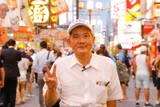
Tatsuhiro N.
4.56 / 5
(62 reviews)

SAIJO SAKE TOWN (SAKAGURA) TOUR
Hiroshima
3 hours
Sakagura is the grouping of breweries in a particular district. The word sake by itself is a generic term for alcohol and Japanese call the clear alcohol unique drink brewed in Japan nihonshu, which has played a central role in Japanese life and culture for 2,000 years. The town of Saijo is one of the premier sake-producing regions in Japan; this tour is a delightful stroll through the district and includes tasting at the breweries.
FROM$281/ per group

Hugh C.
4.92 / 5
(88 reviews)

2 Stunden Die exklusive Murano mit einem privaten Boot
Venice
2 hours
Überqueren Sie die Lagune von Venedig in einem privaten Boot in die Glashauptstadt Italiens für eine exklusive Tour durch die älteste Glasbläserei der Welt. Auf Ihrer privaten Tour werden Sie: Genießen Sie die persönliche Aufmerksamkeit Ihres privaten Reiseleiters mit Abholung und Rückgabe am Ort Ihrer Wahl. Reisen Sie bequem in einem luxuriösen venezianischen Motorboot. Besuchen Sie Muranos älteste Glasfabrik.
FROM$360/ per group

Roberto V.
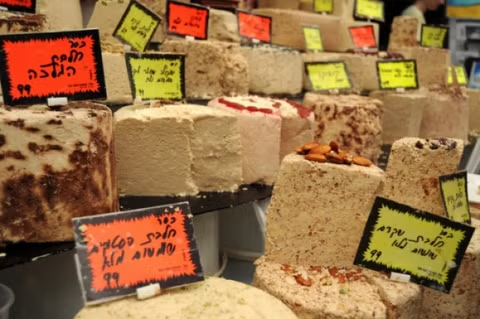
Food and Photo Tour
Jerusalem
2 hours
We will do a few food and drink tastings at Machane Yehuda market and stop at a few great photo spots to get the perfect photos for your socials. The food tasting will include local fruits, spices, teas and treats.
FROM$80/ per group

Melissa P.
4.00 / 5
(1 reviews)
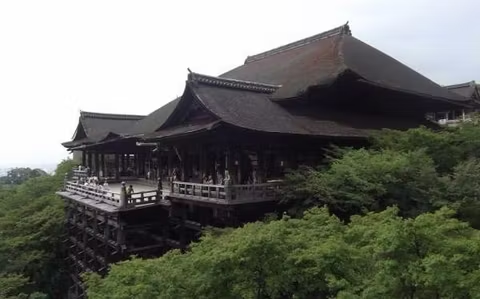
Tour of Kiyomizu-dera Temple in Kyoto
Kyoto
3 hours
(History of the temple) According to the Chronicle of Kiyomizu-dera temple, it originated in 778 when the noted monk, Enchin, enshrined an image of "Kannon" Goddess of Mercy on the mountain overlooking the Otowa-no-taki waterfall; later in 798, the distinguished general, Sakanoue-no-Tamuramaro, built a Buddha hall there, following which the temple came under the official patronage of Emperor Kanmu. Repeatedly destroyed by fire over the centuries, it was rebuilt on each occasion. Today, the principal temple buildings are the "Saimon" West Gate, the three-storied pagoda, the "Kyodo" Sutra Hall, the "Tamurado" Founder`s Hall, the "Todorokimon" Middle Gate, the "Asakurado" Hall, the "Hondo" Main Hall and the "Amidado" Amida Buddha Hall, all aligned on an east-west axis. (Highlights) The "Hondo" Main Hall, built in 1633, is the central building of the temple compound and is an example of "Kake-zukuri", or "overhang" architecture. It is famous for its so-called "Kiyomozu-dera stage", an imposing verandha, supported by a forest of tall wooden columns with wooden braces running through them crosswise and lengthwise. Not only can you be in the solemn atmosphere accompanied by the delicate aroma of burning incense, but also get the breathtaking view below from the 12-meter-high platform, which is popularly known for the proverb "Jumping off the stage of Kiyomizu-dera temple", meaning making a bold attempt at doing something dangerous or impossible. In addition to the natural beauty surrounding the compound, the Buddhist temple is especially attractive in the cherry-blossom viewing season in early April and late in autumn when there are tree leaves in various colors. (How to enjoy) In addition to the beautiful scenery surrounding the temple, you can find various kinds of souvenir shops on both sides of the approach to it and you can spend a happy time unawares. The temple itself is a magnificent building utilizing every sophisticated construction technique available in olden times of Japan. You can meditate, pray or imagine the esoteric world of Buddhism. You can drink cold, clear water from a waterfall below the platform. However, just enjoy being in the temple; no word is necessary. (Others) The bus fare is 460 yen on both ways and the admission fee is 300 yen (at the time of lighting at night, it is 400 yen, however).
FROM$107/ per group

Tatsuhiro N.
4.56 / 5
(62 reviews)
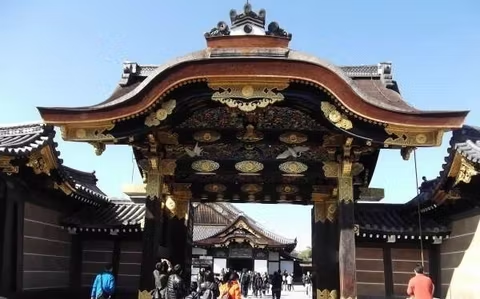
Tour of Nijo-jo Castle
Kyoto
3 hours
(Highlights) This castle was originally built in 1603 as the official Kyoto residence of Tokugawa Ieyasu, the first Shogun of the Tokugawa Shogunate Government. It was subsequently enlarged by adding some structures transferred from Fushimi Castle built in the 1573-1614 Momoyama period and is one of the finest examples of early Edo period and Momoyama culture in Japan, making splendid use of early Edo period building designs, lavish paintings and carvings. In 1867, Tokugawa Yoshinobu,the 15th Shogun, returned sovereignty to the Emperor and the castle became the property of the Imperial family. It has been owned by Kyoto city since 1939. The castle was designated as the UNESCO World Cultural Heritage Site in 1994. (How to enjoy) Just go through the gorgeous gate, "Nino-maru-kara-mon" gate, and you will be met by the main building, "Nino-maru-goten" hall, the main structure, being amazed at its magnificence. In other words, you will never end up admiring the power of Tokugawa era Shogun. The tour inside the main building will take you some 30 minutes. You can enjoy seeing the vast interior, splendid wall paintings, mock-up figures of Shogun and feudal lords meeting in the grand hall, and so on. As you walk on the path outside the main building, you can see the gardens with a pond and trees in perfect harmony. Other buildings will also be a pleasure to your eyes. (Others) The bus fare is 230 yen and the admission fee is 600 yen.
FROM$107/ per group

Tatsuhiro N.
4.56 / 5
(62 reviews)
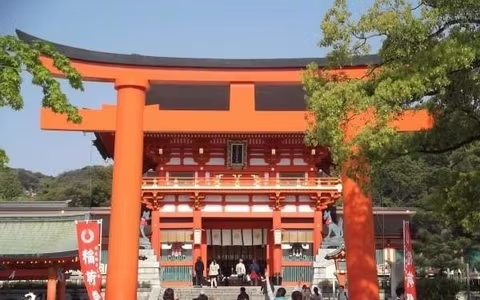
Tour of Fushimi-Inari-Taisya Shrine
Kyoto
3 hours
(History of the shrine) Fushimi-Inari-Taisha Shrine was founded when the god Inari was enshrined on Mt. Inariyama in February, 711. It celebrated the 1300th anniversary of the god`s enshrinement and all the buildings in the ground were restored and re-painted with the vermilion color in 2011. (Highlights) Fushimi-Inari-Taisya Shrine is the "So-honzan" head shrine of 30,000 Inari shrines across the country. There are paths called "sen-bon-torii", meaning alleys of tunnels made of 1,000 torii gates. Actually, however, it is said there are a total of more than 10, 000 torii gates, large and small, in the shrine compound which includes the whole of Mt. Inariyama. You can reach the 233-meter-high top of the mountain, or rather a hill, going up the paths, but it will be a laborious, 1.5-hour walk amid the rich greenery. In the meantime, it is the guardian shrine of merchants and tradesmen, attracting millions of visitors in the New-Year period. A pair of foxes sitting at the base of the gates are regarded as the messenger of the god. (How to enjoy) Go through the huge torii gate and walk along the paved main road and you will be met by the huge main shrine building. Then, walk on unpaved narrow paths which are inside the tunnel of torii gates according to the instructions of the signboard. There are many vermilion-colored buildings on your way, souvenir shops and smaller structures selling charms. You can sit on the sides of the paths and enjoy chatting with your companions or have lunch. There are some places which commnd a fine view of the city of Kyoto. (Others) The JR fare is 140 yen one way from JR Kyoto station. No entrance fee is required (although you are expected to offer whatever amount of monetary donations at the mainn building). Also you are supposed to follow the tradition, including clapping your hands twice when you worship.
FROM$107/ per group

Tatsuhiro N.
4.56 / 5
(62 reviews)
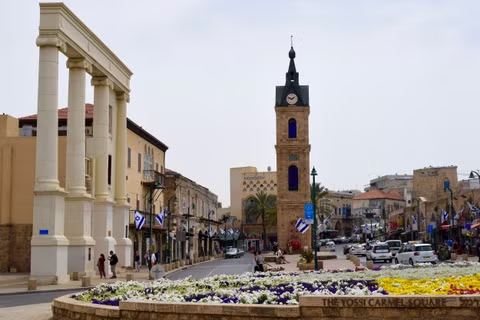
Historical walking tour of Jaffa
Tel Aviv
3 hours
A stroll through the history of Jaffa. We will see sites from a variety of time periods starting as far back as the Ancient Egyptian period through modern times. We will take breaks for photos and shopping.
FROM$120/ per group

Melissa P.
4.00 / 5
(1 reviews)
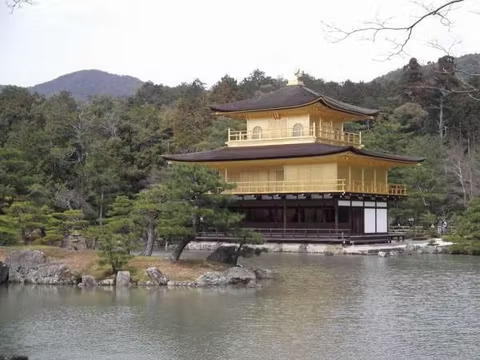
Tour of Kinkaku-ji Golden Pavilion
Kyoto
3 hours
(Highlights) Registered as the World Cultural Heritage Site in 1994, the temple, formally named "Rokuon-ji Temple", was originally built in 1397 by the third Shogun of the Muromachi period but was burnt down by a fire caused by a young Zen Buddhist student in 1950 and was rebuilt in 1955. The garden and buildings centered on the Golden Pavilion was said to represent the Pure Land of Buddha in this world. The temple also functioned as the official guest house. In 1987, gold foils were re-plated completely after one year and eight months of work. The golden structure forms a striking contrast to the water of the pond in front of it and the greenery surrounding the temple. As you walk on the path after viewing the temple, you will come across The "Sekka-tei (Place of Evening Beauty)" Tea House, where you can see the Golden Pavilion shining beautifully in the evening glow, and "Fudo-do" Temple hosing the stone statue of the Buddhist deity, "Fudo-myo-o." Yow will also find small stalls selling good-luck charms and small trinkets as well as souvenirs. (How to enjoy) Just walk on the pass leading to the Golden Pavilion and other buildings according to the instructions of a brochure you will be given after paying the admission at the gate. You can gaze at the magnificent golden structure and take its photos or ask someone for help to have your picture taken with the temple in the background. You can also enjoy drinking tea in the open-air garden near the "Sekka-tei" Tea House, or you can bask in the delicate aroma of burning incense at "Fudo-do" Temple. If you read the brochure, you can learn the history of the entire garden and the buildings. (Others) The bus fare is 230 yen and the admission fee is 600 yen.
FROM$107/ per group

Tatsuhiro N.
4.56 / 5
(62 reviews)
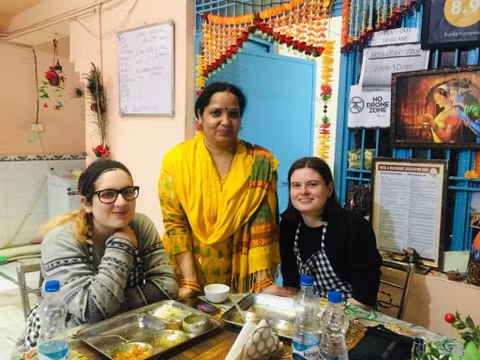
Local Food Tour With Cooking Classes in House Agra
Agra
2 hours 20 min
They Will Learn How to cook Indian Food and Help for cooking with Indian ladies after cooking they will do food tasting and have lunch or Dinner at the same place and food that they cook.
FROM$20/ per person

Abhishek S.
5.00 / 5
(2 reviews)
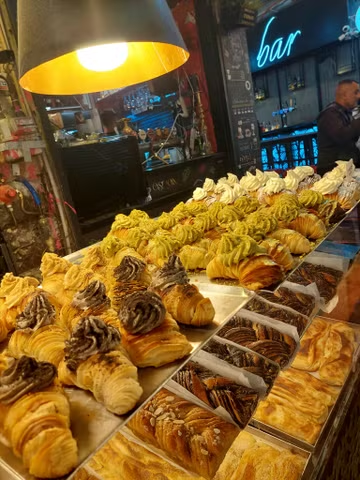
Solo-Traveler Taste of Israel Tour
Jerusalem
2 hours
We will do a few food and drink tastings at Machane Yehuda market and then go to the wine temple for a wine tasting. The food tasting will include local fruits, spices, teas and treats and the wine tasting will vary depending on which one you would like to do. The wine tastings are usually booked for 45 minutes and include 3-6 wines as well as an explanation about all of the wines, where they come from and how they are made.
FROM$60/ per person

Melissa P.
4.00 / 5
(1 reviews)

Heritage Walk And Village Tour Agra
Agra
3 hours
It is a newly explored by our travel company the village tour or heritage walk by the visitor in the rural area. Visitors will have a bicycle or walk to reach in the nearby village and then they may have to walk in a certain area. It is a new and extraordinary concept by us where the visitor will feel how the people survived or lived in the rural area it will be really incredible adventure walk tour of the real life of the Indian people in the rural area.
FROM$30/ per person

Abhishek S.
5.00 / 5
(2 reviews)
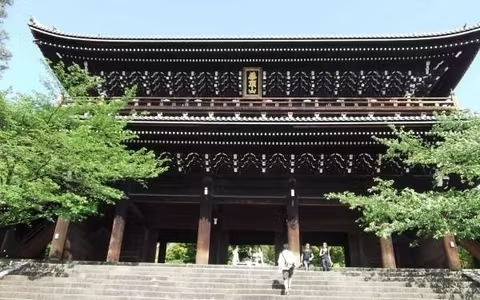
Tour of Chionin Temple
Kyoto
3 hours
(Highlights) Chionin Temple is the head temple of "Jodo (Pure Land) shinsyu" sect of Buddhism in Japan. In addition to the magnificent buildings in the precincts, it is famous for the two main features: one is "uguisu-bari" flooring technique which helped thwart the attempts by robbers to steal by emitting a sound somewhat resembling the note of a "uguisu" bush warbler as they walked and the other is the largest bell in Japan measuring 2.4 meters in diameter, 5.1 meters in height, 23.8 centimeters in thickness and weighing 74 tons. The temple buildings stand in the midst of trees on the height that can overlook the cityscape of Kyoto below. But before reaching the main hall, "Goeido", you have to go up the steep stone stairways which, in turn, enables you to take a good exercise. (How to enjoy) Just walk in the temple compound, get into the main hall and listen to the priests preach. Just see the marvelous technique utilized in the construction of the floor of corridors which is said to be the work of a noted sculptor of the late 16th century, Hidadi (left-handed) Jingoro, and see for yourself if the planking sounds like the chirping of a bush warbler as you walk. Just have a look at and wonder at the huge temple bell. (Others) The bus fare is 230 yen and the entrance fee is 800 yen. However, the main hall, "Goeido", is now under the extensive repair work which is estimated to take some four years (as of April, 2015).
FROM$107/ per group

Tatsuhiro N.
4.56 / 5
(62 reviews)
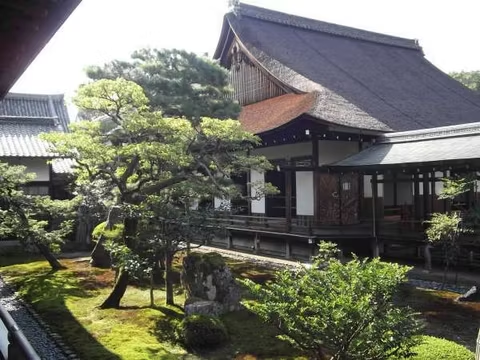
Tour of Daikaku-ji Temple
Kyoto
3 hours
(History of the temple) This temple is the "Sohonzan" head temple of the Daikakuji faction of Shingonsyu Buddhism sect founded by the Reverend Kobo-daishi Kukai. It was originally built as the villa of Emperor Saga when he got married in early Heian period (794 to 1191) and was later enlarged and given the name Daikaku-ji Temple in 876. It is also the place where "Ikebana" flower arrangement began and the location of Samurai dramas and other modern dramas. (Highlights) There are a total of eight buildings, a ceiling painting, a large pond and others in the spacious precincts which are built with all sorts of Japanese construction technique and are a pleasure to your eyes. (How to enjoy) Just walk inside the buildings according to the instructions. You can get in touch with the serene but refined environment and the traditional Japanese culture. (Others) The entrance fee is 500 yen and the JR fare is 240 yen from Kyoto station.
FROM$107/ per group

Tatsuhiro N.
4.56 / 5
(62 reviews)

Food tour in Delhi By Walk
Delhi
3 hours
Taste the mouth-watering street food of Delhi, from Chole Bhatura to Pani puri and Kuliya ki Chaat - all during this 6-hour tour! The city has a lot to offer to food lovers and travelers, be it highly spicy street food or delectable desserts • Try some Dahi Bhalla and Aloo Tikki • Enjoy the popular Daulat ki Chaat • Relish the jalebis at Chandni Chowk • Taste delicious kebabs and mutton Nahari at Karim's • Have some delectable kachoris
FROM$40/ per group

Abhishek S.
5.00 / 5
(2 reviews)
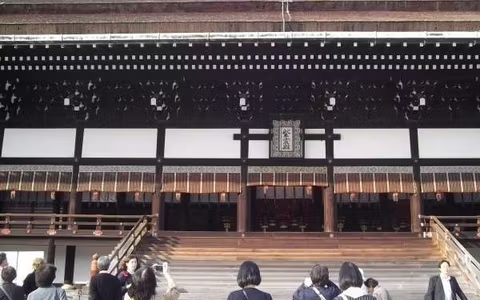
Tour of Kyoto-Gosyo Imperial Palace
Kyoto
2 hours 30 min
(Highlights) Kyoto-Gosyo Imperial Palace has been the residence of Japan`s successive emperors ever since her capital was moved to Kyoto more than 1,200 years ago. It is surrounded by a huge rectangular earthen fence 450 meters north to south by 250 meters east to west and the area is 110,000 square meters. In the compound, there are many magnificent structures that will make you sigh, all of which stand in perfect harmony toward each other and are the combination of all the traditional forms of Japanese architectural technique. The present palace, however, is the reconstruction of the original structures that was carried out toward the end of the Edo period (1603-1867). (How to enjoy) A guide will take you on a tour around the palace buildings. Have a look at them and you will marvel at the traditional Japanese construction technique. You can also enjoy seeing the trees, a pond, gardens and other natural surroundings in the palace grounds. (Others) Reservation is necessary before you visit the place except during the brief period of spring and autumun. It can be done through a return card, online or in person. If you visit the palace administration office by yourself, you can get the permission for the entry on the next day, but if you make a request for a visit online, you have to wait at least four days, and in case of a return card, a month. The subway fare from JR Kyoto station is 260 yen way.
FROM$107/ per group

Tatsuhiro N.
4.56 / 5
(62 reviews)

Tour of Nishi-Honganji Temple
Kyoto
2 hours
(History of the Temple) Designated as the UNESCO World Cultural Heritage Site in 1994, Nishi-Honganji Temple is the mother temple and headquarters of the Honganji faction of Jodo (Pure Land) Shinsyu sect of Buddhism. The Jodo-Shinsyu teaching was established by the Reverend Shinran-shonin (1173-1263) in the Kamakura period. He underwent austere trainings and hardships in various parts of the country before returning to Kyoto to complete his work, "kyogyoshinsho", or The True teaching, Practice and Realization of the Pure Land Way on Buddhism. After his demise, his daughter erected a mausoleum at Higashiyama, Kyoto, which became the foundation of Nishi-Honganji Temple today. In the 16th century, it was moved to and re-established at the present location. (Teachings of the sect) Followers of this sect will be reborn in the Pure Land and attain Enlightenment. They will be able to live lives to the fullest, become aware of both potentials and limitations in this world, overcome difficulties and realize happiness within their lifetime. ( What you can see in the temple) There are many structures in the precincts, many of which have the status of National Treasures and Important Cultural Properties of Japan. They are:" Amidado" (Hall of "Amida" Buddha, built in 1760), ""Goeido" (Founder`s Hall, completed in 1636), "Karamon" Gate, Shoin Hall, "Hiunkaku" House (believed to be part of Jurakudai Palace built by a ruler of Japan, Toyotomi Hideyoshi) and others. There is also a 400-year-old huge ginkgo tree called the "upside-down ginkgo tree", because it looks as if its roots were spread into the sky. ( How to enjoy) Walk around the entire compound of the temple, have a look at all of the magnificent structures and trees and imagine the power of Buddhism. You will learn the meaning of life. All that you see will deeply impress you and remain in your memory. You can pray for the peace of mind before the image of the Reverend Shinran-shonin in the Buddhist altar inside the halls sitting straight on your legs, or relax sitting on the wooden-floored corridors. (Others) There is no entrance fee, but you are supposed to offer whatever amount of monetary donations to the temple to express your appreciation. The bus fare is 230 yen.
FROM$72/ per group

Tatsuhiro N.
4.56 / 5
(62 reviews)

Tour of Heianjingu Shrine
Kyoto
3 hours
(Highlights) Heian Jingu Shrine has been and still is the face of Kyoto since 794. The magnificent shrine came into being when the restoration of Chodo-in, the main edifice of the capital city, Heian Capital Kyoto, was completed in 1895, exactly 1,100 years after the city was established by the 50th emperor of Japan, the Emperor Kammu. Citizens of Kyoto organized a body to deify the Emperor Komei, the 121st emperor, who turned out to be the last ruler of the capital, to honor his character as well as his great achievements who laid the foundation of modern Japan. As a result, the shrine was rebuilt in 1940 (the 2,600th year after the legendary Emperor Jimmu descended from the heaven) and has maintained the present grandeur since then. (How to enjoy) First, see the huge vermilion Torii-gate which is the entrance to the shrine marking off the sacred area. Next, have a look at the Daigokuden hall, which is the main worshipping hall and the place where the Shinto God is enshrined. Then, go into the "Shinen" sacred garden, where you will be met by various kinds of trees, plants, flowers, ponds, stepping stones, small bridges and stones for resting. There is also "Taiheikaku" ceremonial hall built above the largest pond. (Others) The admission fee of 500 yen will be charged if you wish to visit the "Shinen" sacred gardens. The bus fare is 230 yen.
FROM$107/ per group

Tatsuhiro N.
4.56 / 5
(62 reviews)

Tour of Sanjyusangen-do Temple
Kyoto
2 hours 30 min
(Highlights) The 120-meter-long temple houses a total of 1,000 standing statues of "Kannon" (Goddess of mercy), her gigantic statue seated in the center of those images, two powerful and dynamic statues of "Fujin" Wind God and "Raijin" Thunder God at either side of the hall and 28 images of guardian deities protecting the "Kannon" deities and pious Buddhists who believe in her. The statues are made of Japanese cypress using the special technique . As there are thirty-three 2.5-meter-long spaces between the columns in the facade, the temple came to be called "Sanjyusangen-do" (a hall with 33 spaces between columns). (History) Officially called "Rengeo-in temple and designated as the National Treasure, it was originally established by the powerful warrior-politician Taira-no-Kiyomori in 1164. After the original temple building was burnt down 80 years later, the building was reconstructed in 1266 and it has remained unchanged to this day for some 700 years with four major renovations in that period. Among the 1,000 standing statues, 124 were made in the 12th century, when the temple was founded and the remaining 876, in the 13th century, when the temple was renovated. (How to enjoy) Walk on the corridor in the long hall seeing the statues, while smelling the delicate aroma of burning incense, and you will be amazed at the serene-looking faces of the images of "Kannon-sama". Just bring yourself to the mysterious and esoteric world of Buddhism. You will never end up not admiring the ancient sculpture-making technology and the enthusiasm of those who were engaged in the construction of the statues. I wish I could add the pictures of these magnificent images, but I can`t, since photo-taking is no allowed inside the hall. They tend to be ignored, but you cannot miss the two structures in the temple precincts: South Gate and roofed earthen fence both of which are connected with Regent Toyotomi Hideyoshi and reflect the aesthetics of the 16th century. (Others) The bus fare is 230 yen and the entrance fee is 600 yen.
FROM$72/ per group

Tatsuhiro N.
4.56 / 5
(62 reviews)

Tour of Ninnaji Temple
Kyoto
3 hours
(History of the temple) In the Heian period (794 to 1191), the 58th emperor of Japan, Emperor Koukou, started to build a temple then known as Nishiyama-Goganji. In the year of 888, Emperor Utada, taking over the wishes of his predecessors, completed the construction of the temple, which is now called the Temple of Ninnaji. After he resigned from his position, he became a priest and resided in this temple and underwent training under the doctrine of "Shingon-Mikkyo" esoteric Buddhism. Afterwards, head priests of this temple had been the members of the Imperial Family and it had been popularly called the "Omuro-Gosho" Imperial Palace until the Meiji Restoration of 1868. Designated as the UNESCO World Cultural Heritage Site in 1994, it is the "Sohonzan" head temple of the "Omuro" faction of the "Shingonshu" sect of Buddhism. (Highlights) This temple consists of a total of 23 buildings and gardens amid the rich greenery arranged in perfect harmony in the spacious enclosure, with many of them designated as the Important Cultural Asset. There is the magnificent "Nio-mon" gate at the entrance to this temple, a splendid, tall, five-storied pagoda, beautiful landscaped gardens, large tatami-matted rooms with wall paintings, a Buddha image, and so on. All these beautiful structures make us sigh with amazement. (How to enjoy) Just walk in the temple precincts following the guidance of the leaflet. You can enjoy seeing the marvelous buildings and beautiful wall paintings inside "Hakushoin" and "Kokushoin" halls. You can relax sitting on the veranda of "Shinden" Great Hall, while looking at the garden consisting of white gravel and a pond. You can really feel the aura of a great temple constructed with the superb ancient technique. (Others) The entrance fee is 500 yen and the bus fare is 460 yen on both ways. "Kannondo" Hall is now undergoing repairs which will take some three years to complete.
FROM$107/ per group

Tatsuhiro N.
4.56 / 5
(62 reviews)

Tranquil Kyoto: A Serene Journey from Ginkaku-ji to Nanzen-ji
Kyoto
3 hours
This 3-hour tour takes you through the Ginkakuji to Nanzenji area, perfect for those seeking to experience Kyoto beyond the usual tourist destinations. Explore serene temples, tranquil pathways, and hidden gems, providing a peaceful and authentic glimpse into the city's timeless charm.
FROM$147/ per group
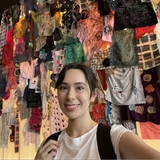
Mary T.
5.00 / 5
(6 reviews)
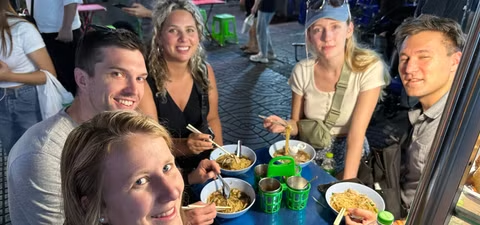
Bangkok Street Food Private Tour
Bangkok
2 hours 30 min
Our tour guide will take you to sampling 6 different spots of prestigious Thai, northern, and southern cuisines that have received high ratings in local food reviews. Strolling through local hidden neighborhoods, back alleys, ghetto-friendly communities, and along the illuminated signs on Yaowarat’s main street.
FROM$78/ per person

Worawut K.

Asakusa Tour
Tokyo
2 hours
Embark on a captivating exploration of Tokyo, starting with Asakusa's historic Senso-ji Temple and vibrant Nakamise Street, then transitioning to the futuristic Akihabara, known for its tech and anime culture. This tour blends traditional experiences like rickshaw rides and the elegance of kimono wearing with the excitement of exploring cutting-edge electronics stores. Experience Tokyo's rich cultural heritage and its modern-day vibrancy through this carefully curated journey.
FROM$105/ per group

Michael A.
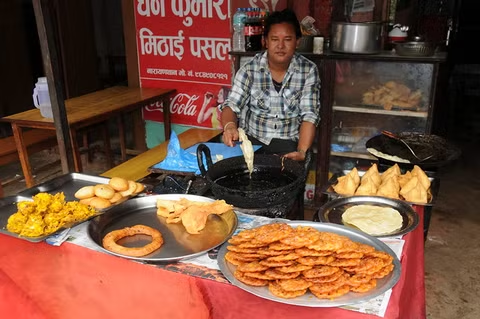
Local Breakfast Food Tour
Bagmati
2 hours
A food tour in Kathmandu is perfect for anyone wanting to try local favorite dishes and some more adventurous foods that can only be found in Nepal. The tour is not only a great way to explore Nepal’s food scene but also to learn more about Kathmandu and Nepal’s history. All of the guides leading the food tour are fun, knowledgeable and young locals who know Kathmandu like the back of their hand and grew up eating at the same food stalls as included in the tour.
FROM$25/ per person

Gyanu A.
5.00 / 5
(1 reviews)